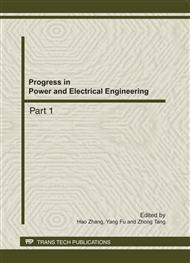p.67
p.74
p.78
p.83
p.87
p.92
p.98
p.104
p.109
Experimental Study on Start-up Characteristics of Pulsating Heat Pipe
Abstract:
Pulsating heat pipe (PHP) with distilled water and acetone as working fluids was experimentally investigated. It is found that the PHP required a certain range of heating power to be started, within which the time required to start the PHP became shorter when the heating power was higher. There was a certain incline angle which is 45°in this experiment to start the PHP more quickly than other angles performed. The minimum power to start the PHP became higher when the filling ratio was higher. Compared with distilled water, the PHP was more readily to be started with acetone as working fluid.
Info:
Periodical:
Pages:
87-91
Citation:
Online since:
October 2011
Authors:
Price:
Сopyright:
© 2012 Trans Tech Publications Ltd. All Rights Reserved
Share:
Citation:


